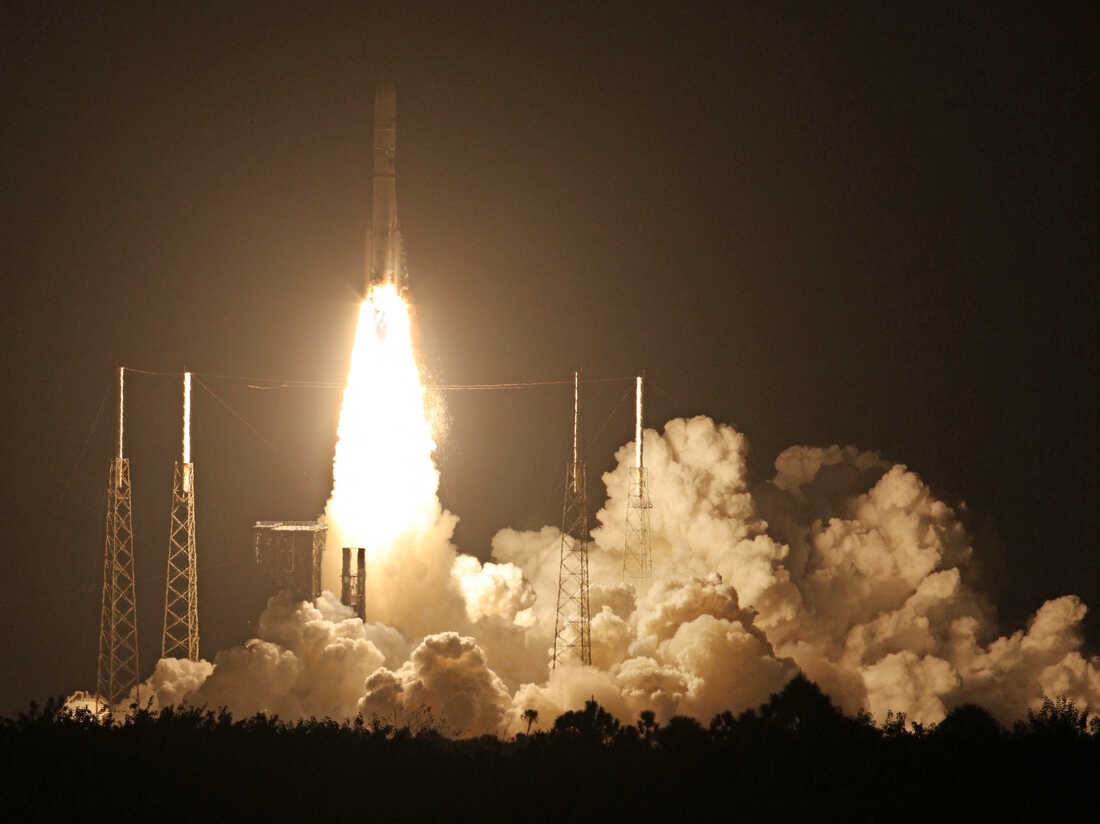Peregrine moon lander heads back toward Earth and should burn up in the atmosphere
Jan 15, 2024 · 08:00

United Launch Alliance's Vulcan Centaur lifts off from Space Launch Complex 41D at Cape Canaveral Space Force Station in Florida on Jan. 8, 2024, carrying Astrobotic's Peregrine Lunar Lander. After suffering a propellant leak, the lander now appears to be destined to burn up in Earth's atmosphere. Gregg Newton/AFP via Getty Images hide caption

United Launch Alliance's Vulcan Centaur lifts off from Space Launch Complex 41D at Cape Canaveral Space Force Station in Florida on Jan. 8, 2024, carrying Astrobotic's Peregrine Lunar Lander. After suffering a propellant leak, the lander now appears to be destined to burn up in Earth's atmosphere.
Gregg Newton/AFP via Getty ImagesThe lunar lander whose much-anticipated mission was stymied last week due to a propellant leak is now expected to fly back toward Earth and burn up in the atmosphere.
Astrobotic Technology announced its latest assessment of the Peregrine lander's trajectory on Saturday in a post on X (formerly Twitter).
The company reiterated that "a soft landing on the Moon is not possible."
Peregrine Mission 1 was to be the first time an American company sent a spacecraft to the moon — and the first time the U.S. returned to the lunar surface in more than 50 years.
The lander blasted off on United Launch Alliance's Vulcan rocket from the Cape Canaveral Space Force Station in Florida on Monday.
But Astrobotic quickly identified a "propulsion anomaly" affecting Peregrine and later said the lander was facing a "critical loss of propellant."
Though the propellant leak has slowed, Astrobotic said Saturday that it now expects the lander to burn up as it reenters Earth's atmosphere, adding that it was assessing its options and would share additional updates with the public.
The Pittsburgh-based firm had previously said that though Peregrine wouldn't reach the moon, it was hoping to continue flying the lander as close to the lunar surface as possible before running out of fuel.
"Sending a spacecraft to the Moon is not easy," NASA science associate administrator Nicky Fox said in a tweet.
"I commend @Astrobotic's hard work, resilience, and commitment as they navigate the challenges facing their mission. With any breakthrough innovation comes rewards and risks," Fox added.
The mission is part of a NASA program that aims to help private space companies send government and commercial payloads into space and onto the lunar surface.
Disclaimer: The copyright of this article belongs to the original author. Reposting this article is solely for the purpose of information dissemination and does not constitute any investment advice. If there is any infringement, please contact us immediately. We will make corrections or deletions as necessary. Thank you.
